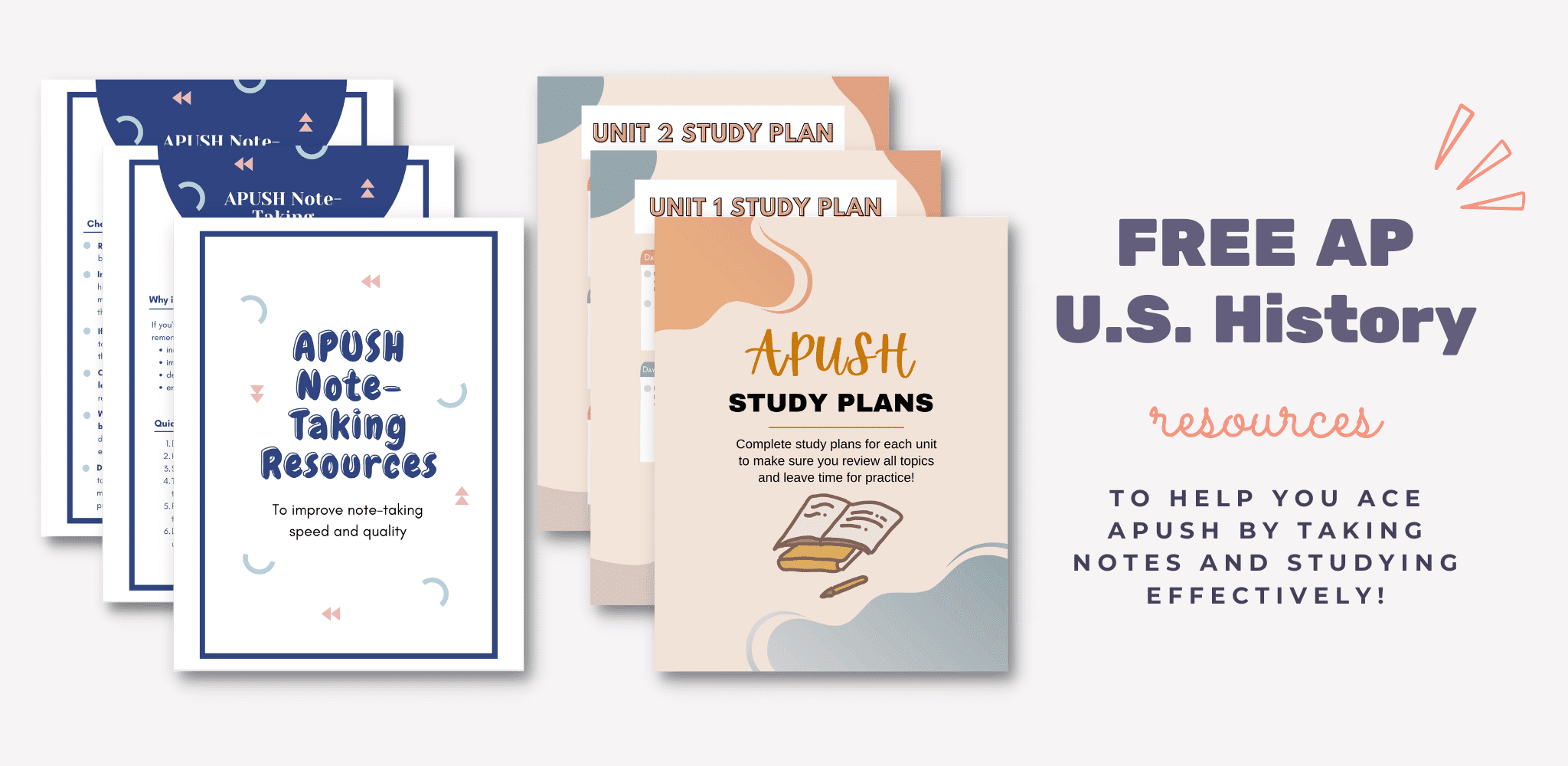

Starting a peer tutoring program as a school student can seem like a daunting task. However, by following the right steps, you can get your tutoring program on the road quickly.
In high school, I ran two peer tutoring programs. I founded one outside of school and coordinated another at school.
Therefore, whether you want to know how to start a peer tutoring program inside or outside of school, I’ve got you covered! (And if you haven’t decided, I’ve included a section comparing the two.)
When you finish this article, you’ll know:
- The benefits of starting a peer tutoring program
- The pros and cons of starting a peer tutoring program inside vs. outside of school
- The steps to start a peer tutoring program inside of school
- The steps to start a peer tutoring program outside of school
- The answers to a few FAQ
Let’s dive in!
Why should you start a peer tutoring program?
Here are some of the primary benefits of starting a peer tutoring program:
1. You can help peers
This one’s a pretty obvious one, but by providing tutoring sessions, you’ll be able to assist your peers academically.
2. You can make meaningful connections
As the founder of a tutoring program, you’ll work with adult supervisors and other hardworking tutors. This collaboration can lead to meaningful connections.

3. You develop leadership skills
Coordinating a tutoring program gives you valuable experience in coordinating a group of people to achieve a goal.
You’ll learn a lot about time management, organization, motivating others, and effective communication.
4. You stand out in applications
The leadership skills you demonstrate by starting a peer tutoring program will look attractive on applications, whether it’s for college, an internship, a job, or some other position.
5. You have potential to expand
Finally, by starting a peer tutoring program, you’ll build a group of volunteers and a target audience (the tutees).
You can leverage this to expand services beyond tutoring, thus demonstrating stronger leadership.
Should I start a peer tutoring program inside of school or outside of school?
If you’re undecided, there are a few primary differences between the two that you must consider.
Benefits of Starting a Tutoring Program Inside of School
1. It’s easier to market your program, since there is an existing student body that can serve as tutors and tutees.
In contrast, if you start a tutoring program outside of school, you need to work harder to engage with your target audience.
When looking for tutees, you must first establish that your organization is trustworthy.
2. Communication amongst members is crucial in any organization. With the backing of a faculty advisor, you can organize regular meetings of all tutors on campus.

If you start a tutoring program outside of school, it may be harder to get all tutors to meet together. This is especially true if tutors are from different schools with different schedules.
Benefits of Starting a Tutoring Program Outside of School
1. You can reach a larger audience.
In contrast, the scale of a tutoring program inside of school is limited to the size of your school’s student body.
2. You can expand services beyond tutoring.
For a tutoring program inside of school, you may be able to expand services beyond tutoring. However, it may be more difficult.
This is because you’ll be limited to school resources and will need to receive explicit approval from administration for every activity.

Once you’ve decided which choice is better for you, it’s finally !time to learn how to start a peer tutoring program!
Steps to Start a Peer Tutoring Program at Your School
1. Create a Plan
When creating a plan, you must answer this question: Will you be starting the program as part of an existing club? Or, will you be starting it as an entirely separate program?
Your answer will influence the planning process. That’s because if you answered yes to the first question, you can leverage existing resources (e.g., faculty advisor, member students).
However, with a new program, you’ll need to start from scratch.
Identify Your Goal
To identify your goal, you need to identify what kinds of tutees you will be targeting.
To address this, you’ll need to ask yourself questions like:
- Is there a particular subject (or multiple subjects) that I want to focus the tutoring on?
- Is there a particular grade level (or multiple grade levels) that I want tutees to be from?

For example, you may decide that you want tutors to be upperclassmen who tutor underclassmen in computer science.
Your goal is to spark interest in computer science in younger students. You envision potentially helping those students enter coding competitions.
Address the Details
Now that you have a vision in mind, you need to address the nitty-gritty details:
- How will tutees sign up for tutoring sessions?
- How will you determine if new tutors are competent? Will there be a training process?
- How will tutors be paired with tutees?
- Where will tutoring sessions take place (virtual or in-person)?
- How will you facilitate communication (i.e., communication between you and the tutors, communication between tutors and tutees)?
2. Communicate With School Officials
After drafting a general plan of your tutoring program’s goals and inner workings, it’s time to get your idea out there.
Find a Faculty Advisor
If you plan to start the peer tutoring program within an existing club, propose the idea to your faculty advisor. They will be able to guide you from there.
If you don’t, however, you’ll need to find a faculty advisor. Speak to teachers you’re familiar with and who you think may be supportive of your cause.

You may need to speak to several teachers, but don’t be discouraged. Teachers have their own busy schedules, so if your proposal is rejected a few times, don’t take it personally.
Schedule a Meeting With Administration
Once you’ve found a faculty advisor, you need to contact the appropriate members of your school’s administration. (This will likely be the staff members who review club proposals.)
Send an email with the following components:
- The goal of your tutoring program
- The name of your faculty advisor
- A broad overview of how you envision tutoring to be carried out (not too detailed, though—mostly, you just need to show that you’ve put a lot of thought behind the proposal)
- A request to meet and discuss the proposal

If you successfully meet with the administration and have your tutoring program approved, you can move on to the next step.
3. Select Tutors
If the tutoring program is part of an existing club, then you already have students that can be tutors.
However, if it’s not, you’ll need to get a bit creative with marketing.
Here are some ways to raise awareness about your program:
- Speak to classmates
- Get the school administration to mention your program in its newsletter
- Put up posters
- Market on social media
- Mention a fun first meeting with engaging activities and freebies
(Click here for more ideas to attract members to your school organization.)
Also, remember to create a way for students to confirm their interest. You can do this by having students sign up on a piece of paper or by sending out a Google Form.
4. Hold a Meeting With All Interested Tutors
Once you have a list of interested tutors, notify everyone about the first meeting date. As I mentioned previously, having a fun first meeting can encourage more students to show up.
Provide An Overview of Your Program
Although the first meeting should be fun and engaging, you must also get your point across.
Make sure all students leave the meeting with a good idea of:
- The purpose of the program
- The estimated time commitment
- How the program will be run
- Good tutoring practices
- The future meeting schedule
You can prepare a slideshow to communicate these points.

Create a Form
During the meeting, you should also have tutors fill out a form (on paper or digital).
This form should be used to understand:
- Why each student wants to become a tutor
- The subjects each tutor wants to tutor in and the credentials they have to support
- The estimated time availability of each tutor
- Any other information to help you determine whether a student would make a competent tutor
5. Attract Tutees
After gathering a group of competent tutors, you need to start marketing your program to potential tutees.
Have a Plan for Assigning Tutees to Tutors
Before having students sign up for tutoring sessions, you must have a plan to coordinate session scheduling.
Your plan should address these questions:
- How will tutees be paired with tutors?
- How will both parties know the time and place to meet?
Do Marketing
Now, it’s time for another round of marketing. You can use many of the same tactics you did to attract tutors.
Provide a Signup Method
Make sure students who want to schedule tutoring sessions can sign up easily.
For example, you can have tutees submit requests via a Google Form. Or, you can have them fill out a paper form to be turned in at a physical location.
Whether you use a digital or physical form, make sure tutees provide the following information:
- Contact information
- Their time availability
- Subject to be tutored in
- (Optional) preference of tutor
- Additional resources for the tutor to review in advance
6. Hold Regular Meetings
From personal experience, I know that consistent communication is one of the most essential aspects of managing an organization.
Holding regular meetings is a great way to keep everyone on the same page. Also, it creates a sense of unity between all tutors.

At meetings, you can also motivate tutors using the following methods:
- Provide stats of tutoring sessions (# of sessions completed, subjects tutored in, etc.)
- Recognize tutors who have tutored the most hours/sessions each month
- Plan fun activities
7. Continually Streamline the Program
Streamlining means coming up with ways to make your program more efficient and accessible.
Even if you think you’ve addressed every possible detail, you will encounter friction along the way. While coordinating tutoring, I faced issues like tutees not showing up to a session (or vice versa).
When you encounter issues, you will need to come up with ways to resolve them. Perhaps you’ll need to create a better communication system. Or, you’ll need to come up with a more reliable scheduling method.
Below, I’ve listed two other ways to streamline your tutoring program:
Send a Feedback Form to Tutor and Tutees
Often, students are unwilling to speak up about issues unless you directly request it.
You can get feedback by sending out a feedback form to tutors periodically. Additionally, you can send a feedback form to tutees after each session.

In the form, ask students what they like about the program and what they think can be improved. Their responses will inspire ways to streamline the program.
Assign Leadership Positions
As your tutoring program expands, you may want to split responsibilities amongst several officers.
For example, you could designate someone to coordinate session scheduling.
You may also want to branch out from tutoring. Going back to the example of the computer science tutoring program, you could start a project to mentor students in coding competitions.
To manage the mentorship project, you would likely need to create leadership positions to divide responsibilities.
Steps to Start a Peer Tutoring Program Outside of School
There are several similarities between starting a peer tutoring program at your school vs. outside of school. Therefore, I’ve copied a few excerpts from the previous section with some minor alterations.
However, there are also some important differences, so if you want to start a peer tutoring program outside of school, I highly encourage you to read this section thoroughly.
1. Create a Plan
Identify Your Goal
To identify your goal, you need to identify what kinds of tutees you will be targeting.
To address this, you’ll need to ask yourself questions like:
- Is there a particular subject (or multiple subjects) that I want to focus the tutoring on?
- Is there a particular grade level (or multiple grade levels) that I want tutees to be from?
- Do I want to target students of a particular background? (e.g., low-income, minority)
For example, you may decide to provide tutoring in science to students from low-income families. Your goal could be to spark interest in science and potentially coordinate more rigorous science mentorship projects.

Address the Details
Now that you have a vision in mind, you need to address the nitty-gritty details:
- How will tutees sign up for tutoring sessions?
- How will you determine if new tutors are competent? Will there be a training process?
- How will tutors be paired with tutees?
- Where will tutoring sessions take place (virtual or in-person)?
- How will you facilitate communication (i.e., communication between you and the tutors, communication between tutors and tutees)?
2. Create a Brand
Creating a brand is essential because you need to establish credibility for your peer tutoring program.
This may sound like a daunting task. However, the good news is that you can establish a brand quickly by doing the following:
- Create a logo
- Create a mission statement (to learn how to create an effective mission statement, check out step #1 in this how to start an organization post)
- Set up a website and/or social media accounts
- If you’re stressed about building a website, you can use a simple website-building platform. Personally, I recommend Wix, which is user-friendly and customizable.
- Have a consistent color scheme

Once you’ve established your branding, it’ll become easier to move on to the following steps.
3. Select Tutors
Start by speaking to family, friends, classmates, and other acquaintances.
Chances are, your school may allow you to leverage its marketing channels. If so, you may include a snippet in the newsletter and put up posters.
You should also market your program on your personal and branded social media accounts.
Also, remember to create a way for students to confirm their interest. You can do this by having students sign up via a Google Form.
4. Reach Out to Your Target Audience
While you’re building your group of tutors, you should also be reaching out to your target audience.
There are several ways to do this, but in my opinion, one of the most effective ways is reaching out to organizations. Particularly if you have a very specific target audience in mind (e.g., low-income or minority students), partnering with an organization will enable you to reach your audience.
Once you have a website and/or social media, you can start reaching out to organizations.
I suggest starting local. Research local organizations that align with your goals, and send an email to the appropriate staff member(s).

You must start on this process early for a few reasons:
- Organizations may have you visit their site. This is to get a better feel of who you are and whether you’re trustworthy.
- You’ll likely need to contact several organizations. Every organization operates differently, so they may or may not be open to your tutoring services.
- You need to give partner organizations enough time to reach out to their students and families. Also, you need to familiarize them with how sessions will be scheduled and make adjustments if necessary.
If you don’t have such a specific target audience in mind, then you can employ more traditional marketing tactics, such as:
- Putting up posters in your local community
- Encouraging family, friends, and other acquaintances to share news of your program
- Using social media
5. Hold a Meeting With All Interested Tutors
Once you have a list of interested tutors, notify everyone about the first meeting date. Keep in mind that having a fun first meeting can encourage more students to show up.

Provide An Overview of Your Program
Although the first meeting should be fun and engaging, you must also get your point across.
Make sure all students leave the meeting with a good idea of:
- The purpose of the program
- The estimated time commitment
- How the program will be run
- Good tutoring practices
- The future meeting schedule
You can prepare a slideshow to communicate these points.
Create a Form
During the meeting, you should also have tutors fill out a form.
This form should be used to understand:
- Why each student wants to become a tutor
- The subjects each tutor wants to tutor in and the credentials they have to support
- The estimated time availability of each tutor
- Any other information to help you determine whether a student would make a competent tutor
6. Hold Regular Meetings
From personal experience, I know that consistent communication is one of the most essential aspects of managing an organization.
Holding regular meetings is a great way to keep everyone on the same page. Also, it creates a sense of unity between all tutors.
At meetings, you can also motivate tutors using the following methods:
- Provide stats of tutoring sessions (# of sessions completed, subjects tutored in, etc.)
- Recognize tutors who have tutored the most hours/sessions each month
- Plan fun activities
7. Continually Streamline the Program
Streamlining means coming up with ways to make your program more efficient and accessible.
Even if you think you’ve addressed every possible detail, you will encounter friction along the way. While coordinating tutoring, I faced issues like tutees not showing up to a session (or vice versa).
When you encounter issues, you will need to come up with ways to resolve them. Perhaps you’ll need to create a better communication system. Or, you’ll need to come up with a more reliable scheduling method.

Below, I’ve listed two other ways to streamline your tutoring program:
Send a Feedback Form to Tutor and Tutees
Often, students are unwilling to speak up about issues unless you directly request it.
You can get feedback by sending out a feedback form to tutors periodically. Additionally, you can send a feedback form to tutees after each session.
In the form, ask students what they like about the program and what they think can be improved. Their responses will provide inspiration for ways you can streamline the program.
Assign Leadership Positions
As your tutoring program expands, you may want to split responsibilities amongst several officers.
For example, you could have one officer be responsible for coordinating session scheduling.
You may also want to branch out. Going back to the example of the science tutoring program, you could run a workshop giving students hands-on experience in science.
To coordinate new projects, you’ll likely need to create leadership positions to divide responsibilities.
8. Expand Your Services
One of the greatest benefits of starting a peer tutoring program outside of school is the freedom to expand your services.
In school, you’re limited by school resources and must receive approval from the administration.
However, outside of school, you have more freedom to branch out and do things like:
- Teach classes
- Run a workshop
- Hold a fundraiser
- Run a donation drive

FAQ
Since I saw these questions floating around online, I wanted to take a moment to address them.
Does tutoring count as leadership?
As you probably know by now, starting a tutoring program is considered leadership. However, tutoring on its own does not count as leadership.
What makes a good peer tutor?
To ensure that your tutoring program is successful in the long term, you must ensure the quality of your tutors.
During meetings, you should frequently review good tutoring practices. These include:
- Reviewing materials provided by the tutee before a session
- Providing a heads-up at least 24 hours in advance if unable to make it to the session
- Being an empathetic listener
- Providing honest (but considerate) feedback
- Explaining something multiple ways if necessary
- Maintaining confidentiality of sessions
Overview of How to Start a Peer Tutoring Program as a Student
Whether you want to start a peer tutoring program inside or outside of school, you must complete several essential components:
- Come up with a solid plan. This means identifying the goal of your tutoring program and figuring out some nitty-gritty details, like how sessions will be scheduled.
- Use different marketing strategies to attract tutors and tutees.
- Streamline the scheduling process, and be open to feedback.
- Hold regular meetings to create a sense of unity.
- Split responsibilities between different leadership positions as your program grows.
This may sound like a lot, but from my own experience, I can vouch for a few things:
You’ll make meaningful connections with people and develop valuable leadership skills.
Also, as your program grows, you may achieve things you couldn’t have imagined at the start.
All in all, the time and effort you invest will pay off.
Has this post inspired you to start your own peer tutoring program? If so, will you be starting one inside or outside of your school? Let me know in the comments below!
For more on student leadership, check out these posts:

Learning With Angie is a place to share honest, unfiltered advice to promote student success. So if you’re a student (high school, college, or beyond) looking for tips on productivity, studying, personal growth, and more to reach your potential, this is the place! To read more about Learning with Angie, click here.



















